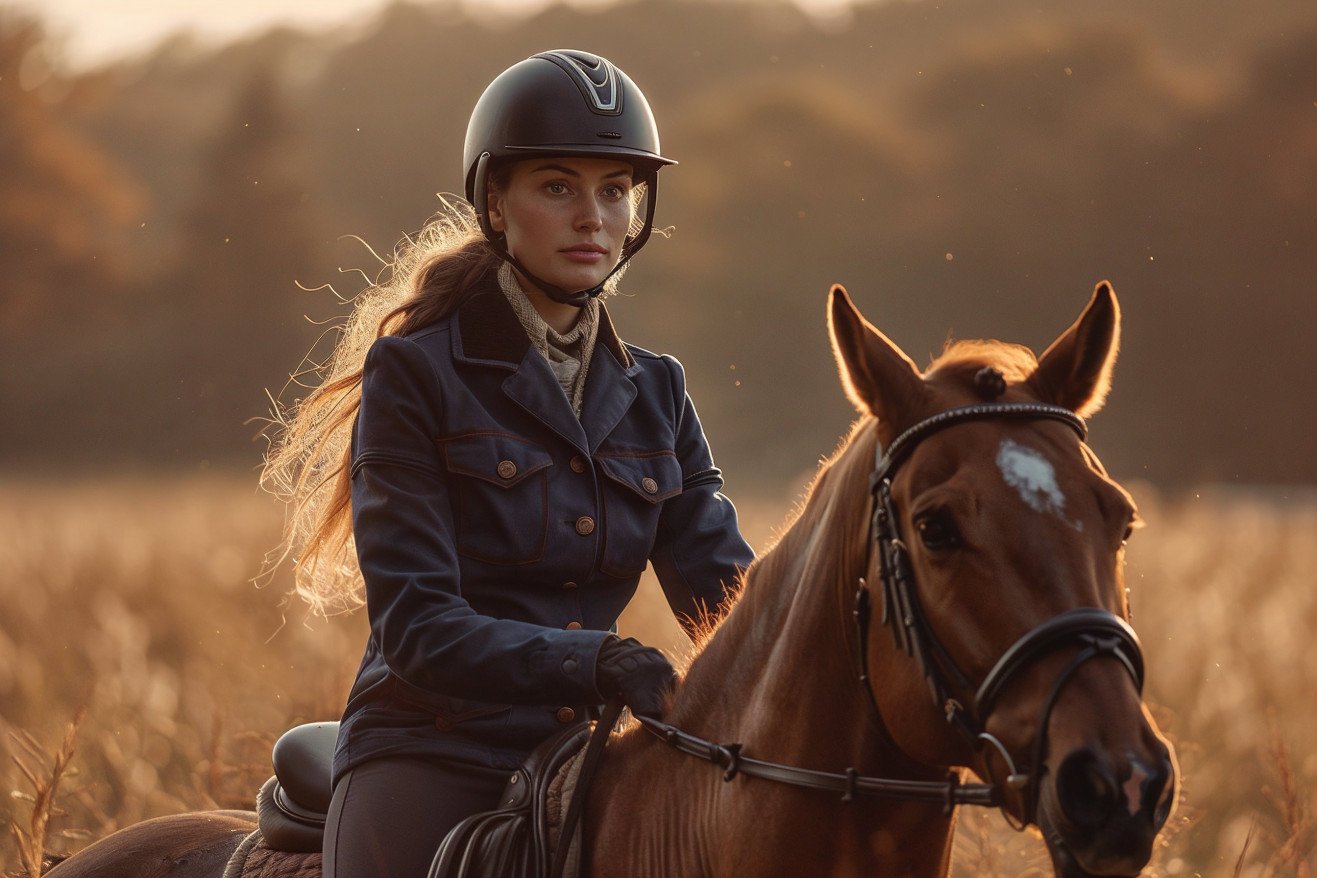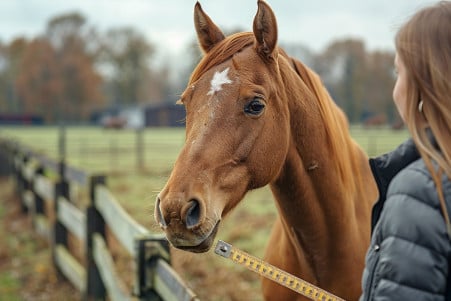Are Horses Happy When They Are Ridden? What Science Says
22 April 2024 • Updated 21 April 2024

Despite their beauty and grace, the question of whether horses are happy when they are ridden is still up for debate. Horses have been used as working animals for thousands of years, but recent studies have shown that riding is an unnatural and stressful activity that causes horses both physical and emotional pain.
This article will explore research from a variety of fields, including equine behavior, biomechanics, and veterinary science. These studies are working to better understand the horse-human relationship and determine whether horses experience happiness or any other benefits when they are ridden or if riding is an activity that only serves the needs of humans. This knowledge can help people better understand horses and improve the way they are treated.
Are Horses Happy When They Are Ridden?
Understanding Equine Body Language and Behavior
One of the most important reasons to understand equine body language is to assess a horse's comfort level when being ridden. According to Horse Rookie, signs of a happy horse include floppy, relaxed ears, a lowered head, standing squarely, a tail that moves freely, and licking and chewing. Signs of an unhappy horse, on the other hand, may include ears that are pinned back, a head that's up, feet that are stomping, nostrils that are flared, and a tail that is clamped.
Ears and tails are especially important to pay attention to. Ears that are moving quickly or are pinned back can indicate stress or irritation, while ears that are relaxed and resting to the side can indicate a calm state. According to Your Horse, a tail that moves freely and loosely is a sign of a happy horse, while a clamped tail or a tail that swishes can indicate stress or irritation.
In addition to these more obvious signs, it's important to pay attention to more subtle signs of pain or discomfort, such as muscle tension, stiffness, or a tight mouth. Even something as small as quivering nostrils can be a sign that something is wrong, says Dr. Debbie Marsden. Riders need to be aware of these signs and make sure to address any potential issues.
Licking, chewing, and soft snorting are all signs of a relaxed, happy state. When a horse does these things while being ridden, it's a sign that they are comfortable and accepting of the situation. By paying attention to these signs and interpreting them correctly, riders can make sure they are meeting their horse's needs and ensure that both they and their horse have a more positive experience.
How Tack Fit and Rider Ability Affect the Horse
The horse’s comfort and well-being are also impacted by the fit and suitability of the tack as well as the rider’s ability and experience. According to World Horse Welfare, Dr. Sue Dyson’s research has shown that lameness, poor saddle fit, and inappropriate rider size, position, and balance are the most common reasons for pain-related behaviors when being tacked up and mounted.
Poorly fitting or inappropriate tack, such as a saddle or bit that doesn’t fit properly, can cause the horse a great deal of physical discomfort and pain. As The Horse notes, behaviors like bucking, rearing, and resistance are often the horse’s way of letting the rider know that it’s in pain. Riders need to make sure that their tack fits their horse properly and doesn’t cause any rubbing or pressure points.
In addition to tack fit, the rider’s ability and experience also have a big impact on the horse’s comfort and willingness to be ridden. As Your Horse points out, horses that are uncomfortable in the contact may show evasive behaviors such as head-tossing and tongue evasion, or even more dangerous behaviors such as rearing and bolting. Riders need to make sure that they maintain their balance, position, and consistency in their aids so that they don’t confuse or stress their horse.
By making sure that their tack fits properly and improving their own riding ability, riders can make the horse’s experience more positive and enjoyable, which will help build trust and cooperation in the partnership.
What Positive Reinforcement Training Can Do
The concepts of positive reinforcement training can be a game-changer for traditional horse training. As The Willing Equine notes, positive reinforcement means that you reward the horse for good behavior with something that the horse finds pleasurable, like treats, scratches, or even a marker sound like a clicker. This is the opposite of training that uses the application or removal of aversives to get the horse to do what you want.
The advantages of positive reinforcement are many. According to the World Bitless Association, these include improved cooperation, faster learning, and less stress for the horse. Horses that are trained using positive reinforcement are more likely to be active participants in their training, working to earn rewards rather than just trying to avoid punishment. Noëlle Floyd even describes how she used clicker training and positive reinforcement to help her horse behave better in the cross-ties and develop a more relaxed frame while being ridden.
Although some people may worry about using food rewards or feel that positive reinforcement training is too permissive, it doesn't have to be an either-or proposition. As Noëlle Floyd points out, it can be combined with traditional riding aids to make the training process more positive and fun for both the horse and the rider.
Individual Differences: Breed Traits and Personality Factors
Horses of different breeds have different temperaments and characteristics that can impact their willingness and enjoyment of being ridden. For example, according to Equestrian Movement, Arabian horses are intelligent and can be impatient with inexperienced riders, and Thoroughbreds can be difficult to handle because they have been bred for speed in racing, which has led to them being bred for a temperament that can be difficult to manage. On the other hand, stock horses and Quarter Horses are often more reliable and willing, although they can be prone to "shutting down" if they feel overwhelmed.
In addition to breed traits, a horse's individual personality traits, including confidence, reactivity, and learning ability, are important factors in how they will respond to being ridden. For example, as noted in a study in the Journal of Equine Veterinary Science, horses that have a higher sensitivity to aversion (neuroticism) and a lower sensitivity to reward (extraversion) are more likely to experience stress and discomfort when being ridden. A horse's age, maturity, and past experiences also influence their ability to handle and potentially enjoy being ridden.
It's important to match horses with riders and training approaches that are appropriate for their individual traits to ensure the horse's well-being and make the experience positive for both the horse and the rider. By recognizing the individual needs and preferences of each horse, riders can develop a more positive and cooperative relationship.
Conclusion: How to Improve the Welfare of Horses
This article has delved into the question of whether horses like being ridden or simply tolerate it. The evidence is mixed, but it seems that while some horses may find some satisfaction in their work, many others are in pain and distress.
The key to understanding how a horse feels lies in their body language and behavior. A horse's ears, tail, and muscles can tell you a lot about how they're feeling, including whether they're in pain or distress. This is why it's so important for riders to be aware of and responsive to their horse's needs.
The fit of the tack and the rider's skill level can also make a big difference in how the horse feels. Poorly fitting tack and rough handling can lead to pain and distress, which can cause behavioral problems and make the horse less willing to work. On the other hand, research has shown that positive reinforcement training can make the experience of being ridden more enjoyable and rewarding for both the horse and the rider.
In the end, understanding the horse's point of view is the key to ensuring that horses are treated ethically and responsibly. By focusing on the welfare of these amazing animals, horse owners, riders, and the horse industry in general can create a partnership that's more cooperative and mutually beneficial.


